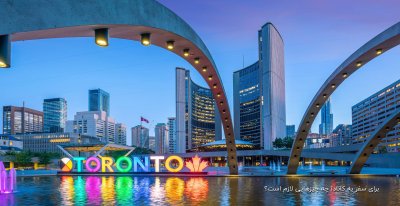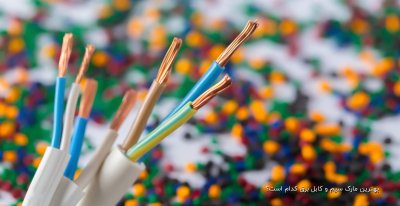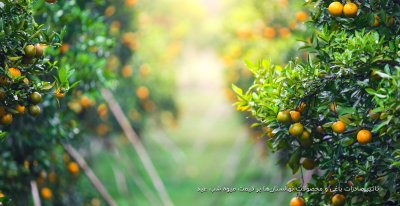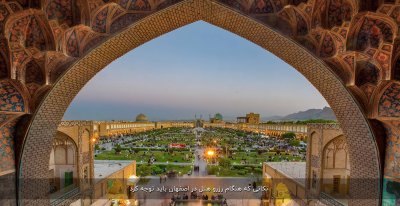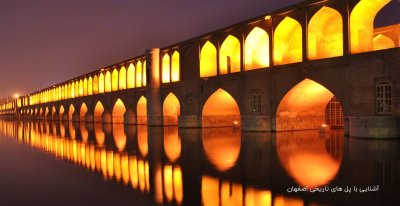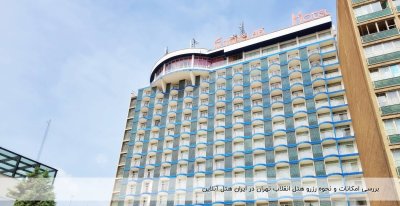اینم واسه آقا جلال ( اگه اشتباه نکنم ) پارتیکال اکسپرشن
البته اگه به اکسپرشن نویسی علاقه داری
Gnomon - Particle Expressions I + II
http://rapidshare.com/files/43940654/GE1-ITPE.part1.rar
http://rapidshare.com/files/43942151/GE1-ITPE.part2.rar
http://rapidshare.com/files/43943631/GE1-ITPE.part3.rar
http://rapidshare.com/files/43946160/GE1-ITPE.part4.rar
http://rapidshare.com/files/43947775/GE1-ITPE.part5.rar
http://rapidshare.com/files/43949565/GE1-ITPE.part6.rar
http://rapidshare.com/files/43955583/GE1-ITPE.part7.rar
http://rapidshare.com/files/43957194/GE1-ITPE.part8.rar
شماره 2
http://rapidshare.com/files/43959239/GE2-PEID.part1.rar
http://rapidshare.com/files/43962586/GE2-PEID.part2.rar
http://rapidshare.com/files/43964678/GE2-PEID.part3.rar
http://rapidshare.com/files/43971900/GE2-PEID.part4.rar
http://rapidshare.com/files/43974420/GE2-PEID.part5.rar
http://rapidshare.com/files/43977126/GE2-PEID.part6.rar
http://rapidshare.com/files/43979374/GE2-PEID.part7.rar
اینم آموزش های داینامیک نومون از پارتیکال و فیلدها و سافت و ریجید و ... هم گفته
Dynamics 01 Create Emitter
There are many ways to create and design particle effects animation in Maya. In this video, two of the key tools for such work are explained and demonstrated: the 'Particle Tool' and the 'Create Emitter' tool. Example scenes include galaxies, clouds, ground fog, explosions, bubbles, smoke and steam.
Topics covered:
Particle Tool
Create Emitter:
Omni Emitters
Directional Emitters
Volume Emitters
Various Fields
Hardware Rendering Techniques
Chapters
01: Introduction
02: Particle Tool
03: Omni
04: Directional
05: Cycle Emission
06: Volume
07: Credits
Code:
http://rapidshare.com/users/QN42ME
=============================
Dynamics 02 Emit From Object
The ability to use vertices, curves and particles as emission sources is an extremely powerful aspect to Maya's dynamics. In this video we focus on the 'Emit from Object' tool as well as the 'Curve Flow' effect. Example scenes include fire, smoke, shockwaves, fireworks, explosions, sparks, solar flares and liquid streams.
Topics covered:
Emit from Object:
Vertex Emission
Lattice Point Emission
Particles as Emitters
Curve Emission
Curve Flow Effect
Various Fields
Hardware Rendering Techniques
Chapters
01: Introduction
02: Emit from Object
03: Particle Emission
04: Per Point Emission
05: Curve Emission
06: Credits
Code:
http://rapidshare.com/users/JAXQUE
============================
Dynamics 03 Surface Emission
Any polygonal or NURBS surface can be used as a particle emitter. But the real flexibility lies with NURBS. In this video we look at a variety of techniques which allow for a high level of control over surface emitted particles. Using the 'Emit from Object' tool, we focus on texture emission. Various methods for working with and creating the source textures are demonstrated. Example scenes include Crawling Fire, Smoke, Steam, and Erosion.
Topic Covered:
Emit from Object:
Surface Emission
Texture Emission
Need ParentUV
Cycle Emission
Paint Texture Tool
Paint Effects
Procedural Texture Animation
Frame Extensions
Photoshop/Flash
Various Fields
Hardware Rendering Techniques
Code:
http://rapidshare.com/users/DMA0JP
=============================
Dynamics 04 Rigid Bodies
Rigid Bodies are NURBS or Polygonal surfaces that can react to the dynamic forces of fields and collisions. In this video, you will learn how to create and animate Rigid Bodies using a variety of techniques including keyframing, fields and collisions. Rigid Body Constraints are used to limit the motion of Rigid Bodies. Constraints simulate the behavior of mechanisms which exist in the real world.
Topics covered:
Active/Passive Rigid Bodies
Various Fields
Dynamic Relationship Editor
Rigid Solver editing
Bake Simulation
Point Constraints
Orient Constraints
Dynamic Constraints
Chapters
01: Introduction
02: Rigid Bodies
03: Nail
04: Pin
05: Hinge
06: Barrier
07: Spring
08: Credits
Code:
http://rapidshare.com/users/5JSWQK
================================
Dynamics 05 Fields
For virtually any dynamic effect, fields will be utilized. Fields are used to simulate natural phenomenon such as wind, turbulence and gravity. Fields can exist as independent, standalone objects, or they can be 'emitted' from points such as vertices and particles. By having a thorough understanding of each field's unique qualities, one can then begin to design any dynamic effect.
Topics covered:
Air Field
Radial Field
Drag Field
Uniform Field
Gravity Field
Turbulence Field
Vortex Field
Volume Axis Field
Chapters
01: Introduction
02: Gravity / Uniform
03: Vortex
04: Drag
05: Radial
06: Newton
07: Air
08: Turbulence
09: Volume Axis
10: Credits
Code:
http://rapidshare.com/users/371S4K
=====================================
Dynamics 06 Goals 2cds
FA powerful method for designing particle motion is to have a particle's position/movement be driven by geometry. By adding 'goals' to a particle object, one can design particle behavior so that they are attracted to an object's pivot, poly vertices or to the UV coordinate space of NURBS surfaces. This can be used to create anything from a laser blast, to spiders crawling along a surface to a character made out of fire.
Topics covered:
Goal
Expressions
Add Attribute
goalU
goalV
goalOffset
goalPP
Ramps
Chapters
01: Introduction
02: Transforms
03: Geometry
04: NURBS Surfaces
05: Particles
06: Credits
Code:
http://rapidshare.com/users/32X3OV
===========================
Dynamics 07 Instancer2cds
Particle Instancing allows one to replace each particle in a particle object with geometry. This can be used to create schools of fish, swarming insects, debris laden explosions, herds of animals and many other effects which require the replication of static or animated geometry. Instancing can be also used with Paint Effects strokes to create elements such as forests and pixie dust.
Topics covered:
Instancer Replacement
ParticleTool/Emitters
Various Fields
Expressions
Add Attribute
Duplicate/Group
Graph Editor
Chapters
01: Introduction
02: Basics
03: Scale
04: Rotation
05: Object Index
06: Animated Objects
07: Lights
08: Credits
Code:
http://rapidshare.com/users/IJ63WD
=============================
Dynamics 08 Intro to Softbodies
In this lecture we begin a four part series which delves into a myriad of softbody effects. One of the most interesting aspects of Maya’s dynamic engine is the ability to constrain vertices to particles. When a surface is turned into a softbody, each point is locked onto a single particle within a particle object. This allows the surface to be deformed using all available techniques for controlling particle behavior. By applying fields, goals, collisions, springs and expressions, an almost infinite variety of effects can be executed. The applications go far beyond the obvious creation of cloth type objects, but this is where we must begin. Lecture includes the creation of curtains, clothing, flames and inertia driven character flesh movement.Topics covered:
Create Softbody
Springs
Fields
Emitters
Make Collide
Component Editor
Attribute Paint
Dynamic Relationships Editor
Chapters
01: Introduction
02: Balloon
03: Curtain
04: Tablecloth
05: Candle Flame
06: Cape
07: Bloated Head
08: Credits
Code:
http://rapidshare.com/users/M2FX4N
============================
Dynamics 09 Softbody Effects
With the fundamentals of softbody effects understood, this lecture moves on to more specific applications. The first group of demonstrated techniques focus on a variety of ground plane effects including oceans, puddles, mud, sand and snow. Each of these are related, yet differ in how they react to external stimuli such as fields and collisions. Water reacts quickly yet the deformation is scale dependant: an ocean responds with large swells while a shallow puddle produces fast-moving, tight ripples. Mud, sand and snow effects are much slower reactions where the surface will gradually if ever return to smooth equilibrium. The lecture then moves on techniques for combining softbodies with rigid bodies, blendshape deformers and auxilliary spring effects for the creation of flags, saliva, and interconnected softbodies.
Topics covered
Create Softbody
Springs
Fields
Emitters
Animated Textures
Rigid Bodies
Deformers
Component Editor
chapters
01: Introduction
02: Ocean
03: Kid on Mound
04: Puddle
05: Mud and Sand
06: Spring Effects
07: Stringy Goo
08: Net Trap
09: Credits
Code:
http://rapidshare.com/users/48EPZC
================================
Dynamics 10 Lattices & Curves 2cds
While surfaces are the obvious application of softbodies, lattices and curves can also be converted to yield several useful results. When faced with situations where only a small region of a surface need behave dynamically, lattice softbodies can be applied in order to greatly improve performance. We also look at a situation where a lattice softbody is used to create a layered softbody effect where a softbody becomes a goal for another softbody. This is useful when field effects must be isolated for indepenent control. Softbody curves applications, on the other hand, derive from the fundamental uses of curves in Maya. Curves involved in modeling operations, curves as particle emitters, curves as particle flow goals, or curves as IK spline handles can produce infinite results when turned into softbodies including laser blasts, chains, rope, or dynamic skeletons tentacles, tails, etc.Topics covered:
Create Softbody
Springs
Fields
Lattices
Curve Flow
Clusters
Skeletons
IK Spline Handles
Component Editor
Chapters
01: Introduction
02: Bubble
03: Lattice Log
04: Laser Tendrils
05: Flow below Softbody
06: Chains
07: Zufuhr Lanterns
08: Credits
Code:
http://rapidshare.com/users/3KQ06Z
Dynamics 11 Spring Effects 2cds
Dynamic springs exist in Maya for two purposes: to keep particles together and to connect particles to vertices. Neither application is softbody specific, although in conjunction with softbodies many useful effects become possible. The focus of this lecture is to demonstrate how objects is Maya can be positionally and orientationally constrained to softbody movement in order to create mechanisms which combine both rigid and elastic objects. We begin with the creation of spring-cams used for simulating hand-held and ride-film camera effects. We then apply these techniques to the creation of ‘Episode One’ style pod racers, suspension rigs, bridges and softbody/character interactions.Topics covered:
Create Softbody
Springs
Fields
Cameras
Constraints
Expressions
Component Editor
Chapters
01: Introduction
02: Spring Cams
03: Pod Racer
04: Hanging Crate
05: Bridge
06: Bridge Steps
07: Credits
Code:
http://rapidshare.com/users/PNJJJE
=====================================
Dynamics 12 Hardware Rendering
Fire, smoke, energy blasts and rain are just some of the dynamic effects required by today’s demanding visual effects industry. More and more, films, television and video games are using dynamic effects to create a heightened sense of realism in their projects. Maya’s hardware rendering technology is a staple of the visual effects industry and allows artists to create these complex effects without putting stress on already compressed deadlines. In this DVD you will learn about the main hardware render types and what kind of effects they can be used for. Real world examples of how to create specific effects and integrate them with photographic elements will show you how hardware renders are used in a production environment.Topics covered:
Hardware Render Types
Hardware Render Buffer
Particle Attribute Ramps
Per Particle Expressions
2D Compositing
Chapters
01: Introduction
02: Points & Multi-Points
03: Hardware Render Buffer
04: Streaks &Multi-Streaks
05: Numeric & Spheres
06: Lighting Particles
07: Pixie Dust Effect
08: Fire Effect
09: Credits
Code:
http://rapidshare.com/users/V9R5YE
=============================
Dynamics 13 Sprite Rendering
Sprites allow you to use an image of your choice and map it onto the position of a dynamically controlled particle. Sprites are used throughout the visual effects industry for such diverse effects as crowd replication, smoke, fire and cloud volumes. In this lecture you will learn to harness the power of sprites. Covered Topics include; creating sprite images, smoke and magic effects, as well as a comprehensive “under the hood” look at the sprite rendering type and all of its unique attributes. You will also learn how to get the most out of your sprites by using simple but powerful particle expressions.
Topics covered
Sprite Particles
Custom PP Attributes
Creation/Runtime Expressions
Hypershade Networks
Vector Functions
chapters
01: Introduction
02: Sprite Attributes
03: Setting up Sprites
04: Sprite PP Attributes
05: Smoke Sprites
06: Column of Smoke
07: Mixing Smoke Colors
08: Volumetric Fog
09: Credits
Code:
http://rapidshare.com/users/EFEZ8D
==================
Dynamics 14 Adv. Sprite Rendering
By allowing image sequences to be mapped onto dynamic particle animation, sprites are one of Maya’s most powerful production tools. Imagine creating a scene that includes a cheering crowd with hundreds of people that you can playback in real-time. Thought this was only the territory of huge visual effects companies with loads of firepower? Not anymore. No other technique allows you to create such complex images with an ultimate degree of control. Want to adjust the lighting of the crowd? How about changing the terrain they are standing on? With sprites, it’s not a problem. Using a few expressions and unique workflows, you will learn how to get the most out of your sprite scenes and your animations will never be the same again. Examples include wind blown seed pods, a sea of microbes, depth-of-field effects, tossed coins and crowd simulations.
Topics covered
Vector / Conversion expressions
Image Sequences for Sprites
Runtime / Creation expressions
Flow Control Statements
Curve Functions
chapters
01: Introduction
02: Sprite Direction
03: Sprite Sequences
04: Depth of Field
05: Combining Sequences
06: Crowd Effects
07: Credits
Code:
http://rapidshare.com/users/KJP909
]








